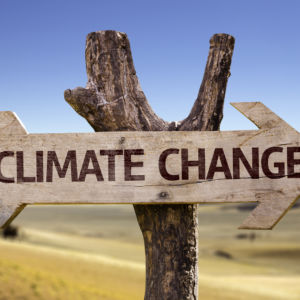The media have worked overtime in reporting that July was the hottest month ever, but perhaps only marginally according to the EU’s Copernicus Climate Change Programme. Does it really matter?
We have been recovering from the Little Ice Age since 1850. The Little Ice Age lasted about 550 years; the recovery has been going on only 169 years. That our temperature is warmer than it was 100, 50 or 20 years ago is only interesting to climate advocates and other alarmists.
A 2012 study, “Orbital forcing of tree-ring data,” by Jan Esper of Johannes Gutenberg University and colleagues from Germany, Switzerland, Finland and Scotland used X-rays that enable more accurate reconstruction of climate history to measure changes in the density of trees in northern Finland over the last 2,000 years. The Esper, et al. reconstruction shows a succession of warm and cold episodes including peak warmth during Roman and Medieval times alternating with severe cool conditions. … The warmest 30-year period was A.D. 21-50, which was 1.05 degree Celsius warmer than the mean temperature for 1951-1980 and 0.5 degree Celsius warmer than the region’s maximum 20th-century warmth, which occurred during 1921-1950.”
That there is and has been a lot of “noise” in surface temperature measurements are a reasonable basis to question the level of alarmism. In a 2017 lecture, MIT professor Richard Lindzen, described the process by which global temperature anomalies are calculated and averaged. He drew on the work of the late Stan Grotch at the Lawrence Livermore Laboratory, who plotted temperature anomalies going back to 1840. Grotch took 30-year averages at each station and recorded the deviations from this average, which is how anomalies are calculated. In looking at this data variability — plus or minus 2 degrees Celsius — Lindzen observed that “most scientists would conclude that there was a remarkable degree of cancellation and that the result was almost complete cancellation.”
Roy Spencer also recently pointed out that it “appears that the European Centre for Medium-Range Weather Forecasts reanalysis upon which WMO record temperature pronouncements are made might have a problem, with spurious warmth in recent years.
Yes, but it is still getting warmer and we are told that the increase in temperatures is caused by human activities and will lead to increased droughts, floods, tornadoes and hurricanes. But Robert Muller, the co-founder of the Berkeley Earth Project, made the point that “there is no compelling scientific result that indicates temperature variability is increasing, that hurricanes (severe or not) are increasing; no good evidence that hurricanes or tornadoes are increasing.”
Yes, but isn’t the burning of fossil fuels causing a dangerous increase in carbon-dioxide emissions that is driving our warming? There is no dispute that burning fossil fuels is increasing atmospheric concentrations of carbon dioxide but that does not translate into the conclusion that those emissions are the major cause of warming.
Spencer recently wrote, “Most of that warming is probably due to increasing CO2, but there is no way to know for sure because we do not know the sensitivity of the climate system or the role of natural climate variations. Climate sensitivity to a doubling of CO2 is likely to be only about 1.5 deg. C, based upon recent energy budget studies and feedback analysis during natural climate variations.”
The search for the human influence on global temperatures has to take in to account natural fluctuations because estimates of human influence over the past century are of similar magnitude to estimated natural fluctuations. The effect of natural variability and measurement problems make the probability of identifying the human fingerprint low.
Yes, but we have to take actions to mitigate the effects of climate change. We are as evidenced by the fact that U.S. emissions have declined about 14 percent since 2007 while global emissions have risen about 16 percent. Independent of how much of the emissions are human and how much are natural, it is a risky strategy to focus almost exclusively on mandated actions to reduce carbon-dioxide emissions. A wise strategy would contain a mix of actions and be flexible so that actions could be adjusted on the basis of new knowledge.
Dread sells and grifters make money selling dread. But technology will once again prevail over the prophets of doom as it did in the 1970s.

